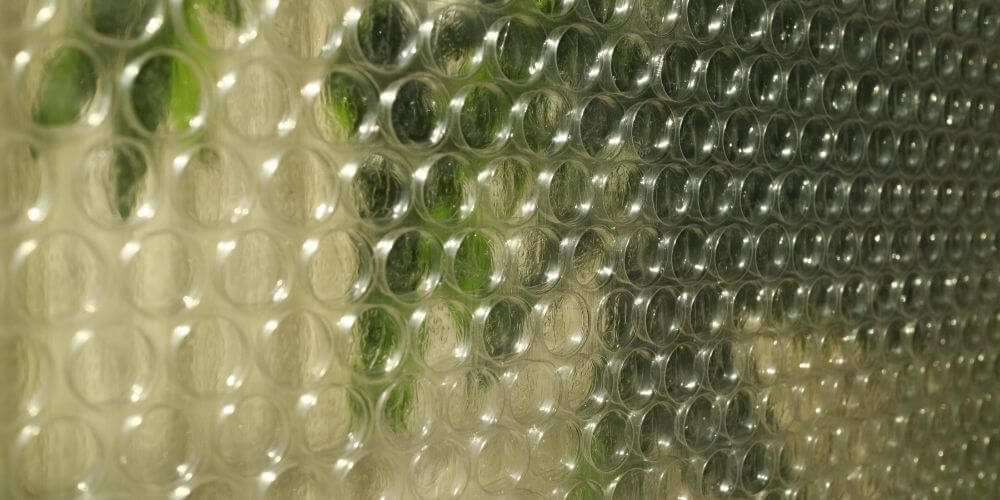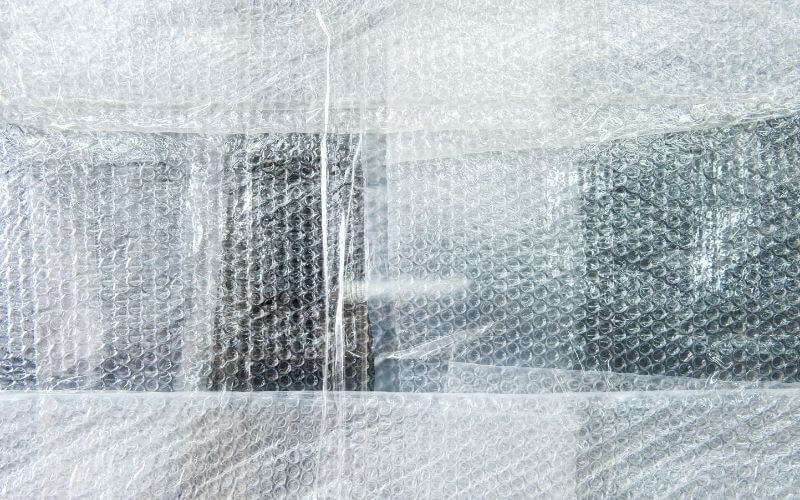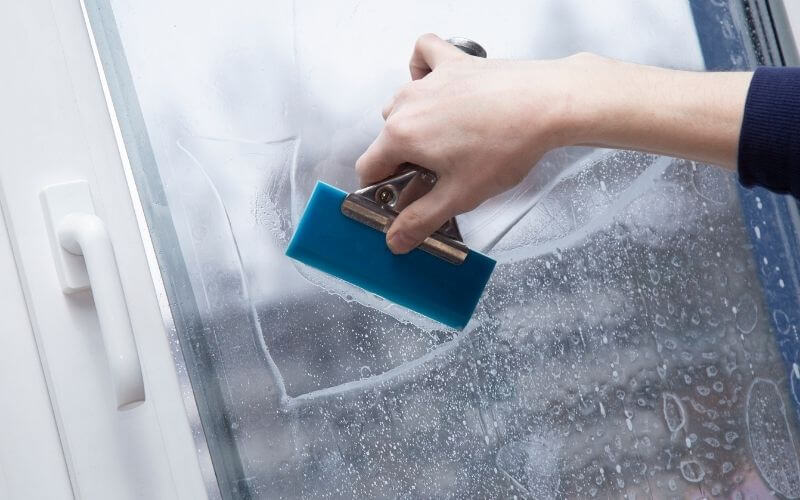Your windows are usually the main source of heat loss during the winter, and they’re also where your home gets most of its heat during the summer.
Particularly in winter, you’ll want to slow down that transfer of heat. If you’ve got your heating system switched on, it’s best to trap the heat indoors as much as possible, so you aren’t wasting loads of electricity.
One option that’s often recommended to help insulate windows is bubble wrap. It might sound odd, but it can really help to cut down on bills. So, let’s take a look at how effective bubble wrap is, and how to install it.

Is Bubble Wrap Good For Insulating Windows?
Bubble wrap can be a surprisingly effective insulator for windows. You could reduce heat loss through single-glazed windows by up to 50% by using bubble wrap. The bubble wrap with large bubbles tends to work best because it has a higher volume of trapped air to provide insulation.
The effect isn’t as good with double-glazed windows since they already have a layer of trapped air inside them – it would likely be around 20 to 25% reduction in heat loss. The effect would be negligible on a triple-glazed window (Source).
Why Bubble Wraps Works As Window Insulation
Windows are the largest source of heat loss within a room. Solid walls already have layers of insulation within them, so most heat escapes from your home through the windows, unless they are triple-glazed.
The reason for this is that glass is an excellent conductor of heat. So, if your home is warm and the outside is cold, the heat will transfer out through it. Conversely, on days where the outside temperature is warmer than indoors, windows will allow more heat into your home.
Bubble wrap uses trapped air to slow the transfer of heat to the window pane. The trapped air and plastic material are less effective conductors than the solid glass.
Adding bubble wrap can therefore massively reduce your heating bills since you’re not having to constantly re-heat your home. The heat is retained, so your heating system doesn’t have to work as hard.
How Do You Insulate Windows With Bubble Wrap?
One of the best things about using bubble wrap to insulate your windows is that it’s surprisingly easy to install.
Here’s a step-by-step guide to insulating windows with bubble wrap:
- Make sure you’re using large sheets of bubble wrap. You don’t want to be using patches of bubble wrap on a window as it will look ugly.

2. Measure your window careful. Then use scissors to cut the bubble wrap to the exact size of the window, or just slightly smaller.

3. Using a spray bottle, wet the surface of the window pane. It doesn’t need to be soaked, a light film will do.

4. Apply the bubble wrap to the window. Make sure the bubble side is facing the window.

5. Press it in place to make it stick. Don’t push too hard to pop the bubbles, but a firm press will ensure it is firmly in position.
It’s important to make sure the bubble side is facing the window. This gives you extra air pockets – not just the bubbles, but the spaces around the bubbles too. So you get extra insulation compared to having the flat side against the window.
Some bubble wrap materials have bubbles that are interlinked. Avoid buying this type if you can, because when you cut it to size you can take out a whole row of bubbles by cutting through one of them. It’s always best to get the normal bubble wrap with individual bubbles.
Pros and Cons Of Bubble Wrap Window Insulation
There are of course pros and cons to using bubble wrap window insulation and it’s not for everyone.
Pros:
- It’s an effective insulator thanks to the trapped air pockets
- It’s cheap, or even free if you re-use bubble wrap you already have (or find someone willing to give it to you)
- It’s super-easy to install with just a thin layer of water
- You can re-use the same bubble wrap for years if you keep it safe
- If you need to remove it, you just peel it off
- It won’t leave any nasty marks or stains on your windows
Cons:
- While bubble wrap won’t stop much light from getting through, it does reduce visibility – you won’t have a clear window to look out of
- It can look a little cheap. If you’re house-proud, you might only want to use it in rooms you don’t use much, or when you don’t have guests around
Bubble Wrap vs Plastic Window Insulation
Plastic window insulation kits let you put a layer of plastic directly onto your window. With plastic being a less effective heat conductor, it slows down the escape of heat from your home.
However, there are a few drawbacks to using plastic window insulation compared to bubble wrap. Firstly, it can be a nightmare to actually install. It’s self-adhesive but thin and really sticky. You know how saran wrap can become a tangled sticky mess? It’s just like that.

Plus, it’s not as effective because you don’t have the trapped air bubbles providing the extra cushion of insulation.
The main benefit to plastic window insulation is the fact that it’s completely clear, so you don’t have any obscuring of your view and once it’s installed then you can’t even tell it’s there – and neither can your guests, unless they touch your windows.
However, if you did need to remove it for any reason, it would leave a sticky residue behind that can be tricky to clean.
The Best Bubble Wrap For Window Insulation
The best bubble wrap for insulating windows is one that has separate bubbles, ideally the larger the better. Larger bubbles contain more trapped air and so act as a more effective insulator. Aim for bubbles measuring a half-inch in diameter, or even bigger if you can find it.
A lot of bubble wrap uses the smaller bubble size of 3/8” or even 3/16”. This will work but it’s less effective. If you already have the smaller bubble wrap at home then you might prefer to use this instead of buying more bubble wrap.

There are other ways you can get some bubble wrap if you don’t want to pay for it and don’t already have some at home. Consider asking friends or family if they have any spare from receiving a package.
Or you can try your luck by asking any local stores. Aim for specialist stores that sell larger items – they’re more likely to have bubble wrap with larger bubbles, or just have larger quantities. Outdoor sports stores that sell things like kayaks or canoes are a good place to look
The Bottom Line
Bubble wrap is a really cheap solution that can help you save a lot of money on your heating bills. You might prefer to take it down in the summer, though if you live somewhere hot then it can help to prevent heat from entering your home as well.
True, it doesn’t look the best, but that’s a personal choice you can make. Even if you just put it up in rooms that you don’t often make use of – like guest bedrooms – and then take it down when you have visitors, you’re still cutting down on the lost heat in your home.
Give it a try and see how much of a difference you notice.
